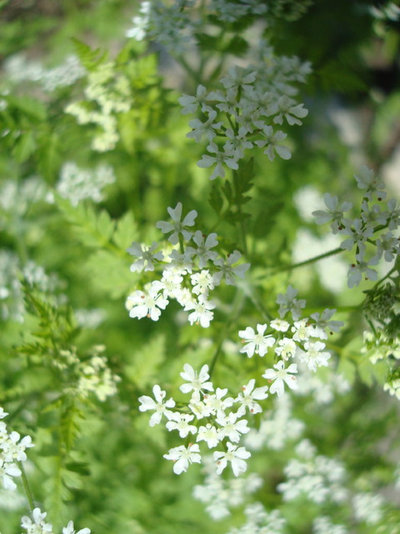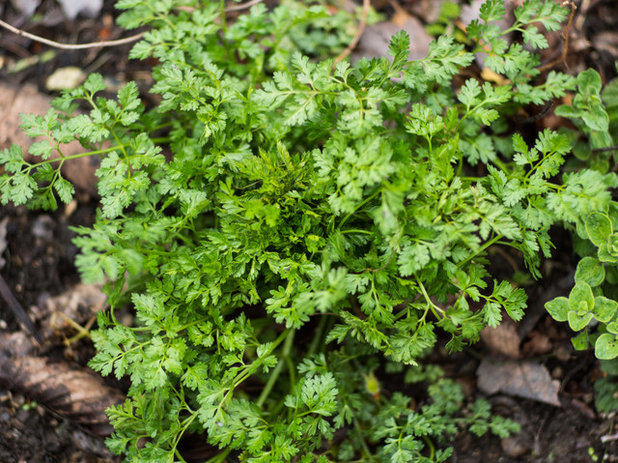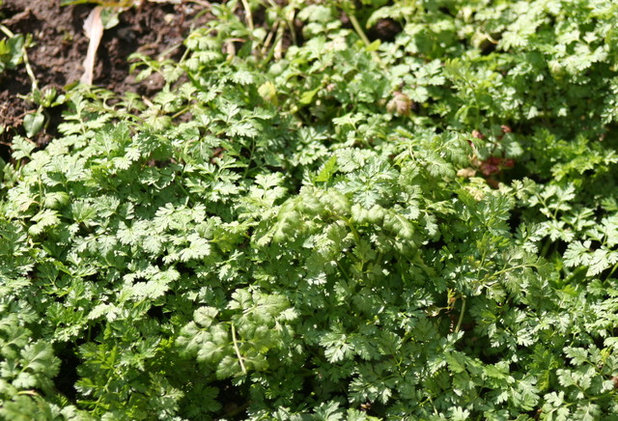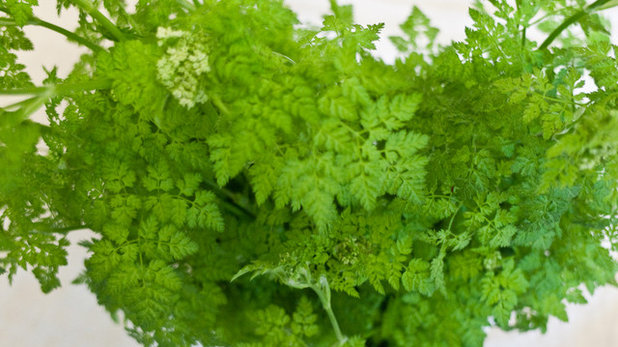Chervil is somewhat of a rarity in the world of herbs. This annual, which goes by the botanical name
Anthriscus cerefolium, prefers partial shade to full sun, wants plenty of moisture rather than drier conditions, and is happy on the cooler days of spring, fall and winter rather than the hot days of summer. Such nonconformity makes it a worthy addition to an herb garden, especially when said garden is looking rather barren early and late in the growing season.
It’s a bonus that chervil is also a lovely plant in its own right, with bright, lacy leaves reminiscent of parsley and other carrot family members and a mounding growth pattern that reaches about a foot wide, with flower stems topped by lacy white foliage up to 2 feet tall.

Chervil is not only relatively easy to grow, it’s a good choice as a filler plant, especially if your garden has some shady areas or if you’re looking for anchor plants in spring and fall. You can expect new plants to appear in the following growing season, since chervil readily self-seeds. You can also expect butterflies, which it attracts.
Ornamental as it is, chervil is primarily a culinary herb. Cooks know it as one of the main ingredients of
fines herbes, the classic French seasoning mixture. It also adds a delicate, anise-like flavor to soups, salads, sauces and egg, chicken and fish dishes.
Light requirement: Partial shade; can take full sun in winter.
Water requirement: Keep soil moist but not soggy.
Prime growing season: Fall through spring.
When to plant: Sow seeds in place in fall in warmer-winter climates and in early spring in cold-winter climates; seedlings do not transplant easily.
Companion plantings: Chervil is an excellent addition to an ornamental garden, growing well with annuals and perennials. It’s also said that growing chervil next to radishes will make the latter spicier.
See more crops to grow in the cool season
Photo by Emma Jane Hogbin Westby
 Planting and care:
Planting and care: Choose a spot that gets partial or dappled shade and gently work the soil, adding in a balanced fertilizer if your soil is poor. Spread the seeds or group them on top of the soil, as they need light to germinate. Thin seedlings to between 6 and 12 inches apart once they reach about 2 inches tall — leave less space between if you want the plants to support each other; leave more space for a more formal look. Chervil is also a good candidate for successive plantings. To prolong the growing season, sow seeds every two weeks.
You can grow chervil in a container as well. It has a long taproot, so look for a planter that is 10 inches wide and 12 inches deep.
10 Expert Tips for Growing Edibles in Containers
Photo by Edsel Little

Keep the soil moist throughout the growing season, but don’t let it get soggy. Remove any weeds around the plants. Pests are few, although you might be bothered by aphids, which can be hosed off with a spray of water or eliminated by encouraging ladybugs to visit your garden. Too much overhead watering could lead to powdery mildew in humid climates.
Cut off the early flower heads to encourage more leaf production. As the weather gets hotter and the leaf flavor wanes, let the flower heads remain for a picturesque addition to your garden and to encourage seed production for later.
Photo by Alexandre Dulaunoy
 Harvest:
Harvest: Begin to harvest when the plants are about 6 inches tall, usually at about six to eight weeks. Chervil quickly loses its flavor, so use it immediately. You can freeze the leaves in ice cube trays, but they won’t be as flavorful as when freshly cut.
Photo by Edsel LittleMore: See how to grow more culinary herbs





